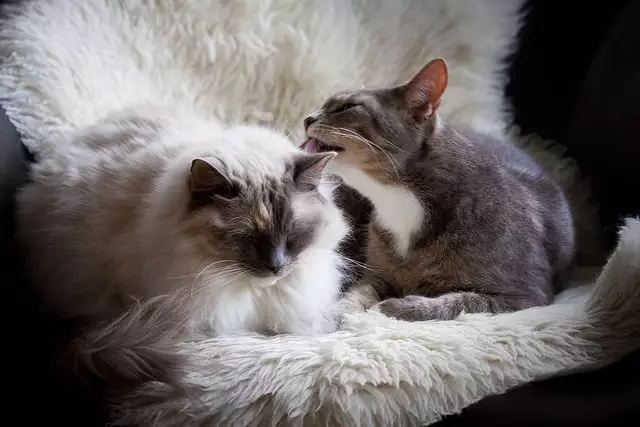Cats are remarkable creatures, each with a unique blend of temperament, instincts, and behaviors shaped by their wild ancestry. While our beloved domestic cats live safe and cozy indoors, they still carry remnants of their wildcat ancestors who thrived as solitary hunters. This instinctual behavior often manifests in their territorial tendencies. As pet owners, many of us dream of a harmonious household where cats lovingly coexist, curling up together in the sun. However, achieving this level of comfort takes more than just hope; it requires understanding and intervention.
Resource Availability: A Crucial Factor
One of the primary catalysts for conflict in a multi-cat home is the competition for resources. Cats can become stressed and anxious if they feel their territory is encroached upon or their availability of essential items is limited. To mitigate stress, it’s vital to ensure there are ample resources for each cat. This means having multiple food and water bowls, litter boxes, scratching posts, and beds dispersed throughout different areas of your home. An environment where cats can access resources without feeling threatened creates a foundation for peace and reduces stress. For instance, a single litter box in an isolated space can trigger anxiety for the more submissive cat, particularly when a more dominant feline is nearby. Thus, creating spaces that allow for personal territory is essential for balanced cohabitation.
Encouraging Positive Interactions
Unlike dogs, whose behaviors are often geared towards pleasing their owners, cats are much more self-oriented. This intrinsic characteristic means the reinforcement of good behavior becomes imperative. If you’ve witnessed unacceptable behaviors like aggressive scratching, the solution lies in providing attractive alternatives that satisfy their instincts. When you notice your cats engaging with each other in a beneficial manner, rewarding them with treats or praise can reinforce this positive interaction. For example, if you find them peacefully lounging close to one another, take the opportunity to reward this behavior. Over time, consistent and positive reinforcement can cultivate a more amicable environment.
Play: The Dual-Edge Sword
Interactive playtime forms an essential part of any cat’s daily routine, promoting physical and mental well-being. However, managing playdates in multi-cat households requires some finesse. When introducing play, be cautious not to incite competition between home feline residents. Schedule individual play sessions with each cat, and as they begin to build trust, gradually introduce shared playtime. Monitoring their interactions closely during these shared sessions is crucial; you wouldn’t want the play to escalate into rivalry. The goal is to ensure that the play remains a source of joy instead of anxiety or competition.
Building Familiarity Through Shared Scent
Cats rely heavily on scent communication, and familiarity plays a significant role in their social structures. When you see your cats grooming each other or rubbing against one another, it indicates a burgeoning bond where they create a “group scent.” Encouraging this behavior can be beneficial, and one way to do so is through sharing grooming tools. By letting each cat smell the brush before use, you help them acclimate to each other’s scents. However, if a cat reacts adversely to the scent of another, forcing the situation can cause anxiety. Thus, patience is imperative—allow for gradual exposure, and only proceed with grooming if both cats are comfortable.
Pheromones: Fostering Calmness
Veterinary science has introduced synthetic cat pheromones, helpful in easing territorial tensions. These pheromones mimic the calming scents naturally released by cats when they feel secure in their environment. Products like ComfortZone offer a source of synthetic feline pheromones in the home, aiding in creating a tranquil atmosphere and minimizing stressors. Utilizing these calming aids can be particularly advantageous in fostering a relaxed cohabitation environment, especially during the pivotal adjustment period of introducing new cats into the household.
By implementing these strategies with a thoughtful approach, cat owners can hope to transform their homes into tranquil havens for their feline companions. Building a peaceful multi-cat household requires dedication, observation, and an understanding of the inherent quirks of cat behavior. With time, care, and the right strategies, it is entirely possible to cultivate an environment where your cats not only coexist but thrive, potentially developing affectionate bonds that warm any pet owner’s heart.

